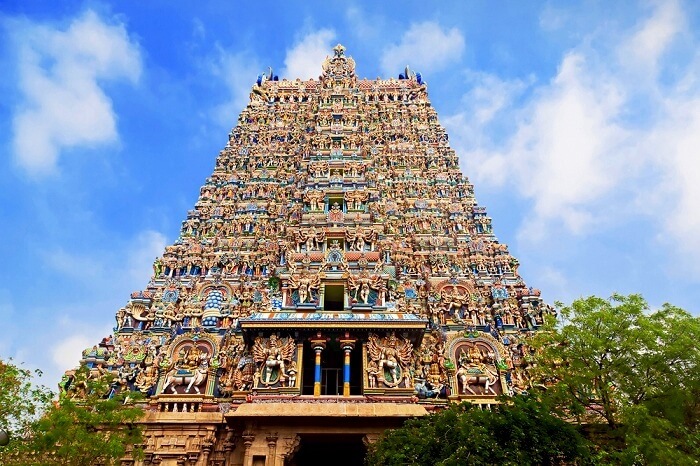
Meenakshi Temple, a glorious and timeless structure, is nestled on the bank of the Vaigai River in Madurai, Tamil Nadu. This significant Hindu temple is celebrated for its vibrant cultural legacy and devotional significance.
Known as Meenakshi Tirukovil or Arulmigu Meenakshi Sundareswarar Temple, it stands as one of the oldest and largest temples in India. This temple honours main deity Meenakshi Amman, a divine incarnation of Parvati Devi and her consort Sundareshwarar, form of Lord Shiva.
Meenakshi Amman is known by different names such as Angayarkanni, Perum Thadagai Amman, and Pachchai Devi.
In Sanskrit, “Meena” means fish and “akshi” means eyes, together translating to “Goddesss with fish-like eyes who rules the kingdom of Madurai, just by her glance” or “Rule of the Fish”. It signifies that just like fish takes care of her kids by her glance, She rules Madurai subjects as her children.
According to the tradition of the Meenakshi Temple, devotees must first have the darshan of Goddess Meenakshi, who faces east, before proceeding to Lord Sundareshwarar. The darshan of the goddess is accessed through the Ashta Shakti Mandapam located on the eastern street.
This powerful deity attracts nearly 15,000 devotees on daily basis, but the number increases to 25,000 on fridays, as it is considered very auspicious day for the Meenakshi amman, generating an annual income of 60 millions.
Sthala Purana of Meenakshi Temple, Madurai
Pandyan King Malayadwaja and Queen Kanchanamala performed a yagna seeking a heir for his throne. A beautiful three-year old girl came out of yagna fire, who had three breast.
The prophecy foretold that her third breast would vanish the moment she saw the man destined to be her husband. When this came true, she instantly fell in love, recognizing him as her future consort.
King Malayadwaja accepted Meenakshi wholeheartedly and raised her as a brave warrior. She was trained in warfare and became a great warrior.
She began conquering neighbouring regions and eventually traveled to Kailash to continue her conquests. There, she encountered Lord Shiva, and the moment his gaze fell upon her, her third breast disappeared. Realizing the prophecy had come true, she fell in love with him.
She requested Lord Shiva to marry her and invited him to her kingdom, Madurai. In a splendid ceremony, Lord Shiva married Meenakshi. Every year, wedding ceremomy of Lord Sundareshwar and Meenakshi is performed on Chitirai masam as Chitirai Tirukalyanam.
Architecture of Meenakshi Temple, Madurai
Meenakshi Temple is a master piece of Dravidian style of architecture, constructed using pink sandstone and white marble. Built over an area of 17 acres, can be dated back to 2000 years.
Ashta Shakti Mandapam
It is a large hall on the eastern entrance of the temple. The pillars are adorned with eight shaktis, or ashta shaktis. On the left side of the pillar, Gowri, Kowmari, Vainavi, and Mahalakshmi. On the right side, Yagnaroopini, Shyamalai, Maheshwari, and Manomani. On the walls of this hall, there are paintings and sculptures depicting the 64 tiruvilayadals of Lord Shiva.
Meenakshi Naicken Mandapam
From the Ashta Shakti Mandapam, the path leads to the Meenakshi Naicken Mandapam, where Shiva and Parvati are seen as hunters and the Huntress. 1008 brass oil lamps can be found on the western side of this mandapam.
Golden Lotus Tank
From Meenakshi Naicken Mandapam, it leads to Mudali Pillai Mandapam; from this, it next leads to Potramarai Kulam, or Golden Lotus Tank. According to the Vedic history, Lord Indra worshiped Lord Shiva using a golden lotus from this pond to atone for his sins.
Unjal Mandapam
Towards the west side of Golden Lotus Tank, there is Unjal Mandapam, where the Deities of Meenakshi and Sundareshwarar are kept on Unjal on fridays for worship.
Kilikootu Mandapam
As the name suggests, in Tamil, Kilikootu means a parrot’s cage. In olden days, a large number of parrots were trained to chant the name of Devi Meenakshi. This is located just beside the Meenakshi Devi garbha griha.
Gopurams
This majestic temple houses 14 gopurams, or towers, that lead to the entry into the temple. However, it has four main entrances, or raja gopurams, representing the east, west, north, and south directions. The south gopuram is the tallest, measuring 170 ft in height.
Gold-plated Vimanams are placed over the garbhagriha of Meenakshi Amman and Sundareshwarar respectively.
The Meenakshi Naicker mandapam also features sculptures depicting Goddess Meenakshi and Lord Shiva.
Mughal Invasion
During the early 14th century, Malik Kafur, a commander of the Delhi Sultanate, attacked the temple and destroyed the city completely. Many sculptures and valuables were looted by them. They also destroyed the various other South Indian temples. Later, this temple was rebuilt by many kings in the 14th century. Further, in the 17th century, Tirumalai Nayak renovated and expanded the temple.
Temple Timings of Meenakshi Temple, Madurai
The darshan timings of Madurai Meenakshi Temple are as follows. However, the timings may change during festival season, and you can contact the temple authority if you are visiting during the festive season.
Morning: 5:00 AM to 12:30 PM
Evening: 4:00 PM to 9:30 PM
Best Time to Visit Meenakshi Temple, Madurai
September to April is the ideal time to visit Meenakshi Amman Temple in Madurai. It attracts millions of crowds annually. However, the crowd increases during the Meenakshi Tirukalyanam.
Festivals of Meenakshi Temple, Madurai
Pattabishekam: It is celebrated in Chithirai masam (April/May) and is a grand event in the Madurai Meenakshi Temple. During the Pattabishekam, the Rayar Kireedam, or Royal Crown, is placed on the deity, and Sengol is handed over to her, signifying the glorious rule of Meenakshi Amman.
Chithirai Tiruvila: It is the most important festival, where the divine wedding (Tirukalyanam) of Meenakshi Amman and Lord Sundareswarar takes place. It takes place in the holy Tamil month of Chithirai (April/May). Also known as Meenakshi Tirukalyanam or Chithirai Tiruvila.
Thaipoosam: It is celebrated according to the Tamil month of Thai (January-February) in Poosam Nakshatram. It is a popular Hindu festival celebrated with great fervor. It is dedicated to Lord Muruga.
Theppam: The utsava murthy of Meenakshi Amman and Lord Sundareshwarar are taken in a procession on a float in Mariamman Teppakulam during 12-day festival.
Avani Moolam: This is a significant festival dedicated to Lord Shiva, spanning over 11 days, celebrated in Avani masam (August-September), moolam nakshatram.
Nearby Places to Visit in Madurai
Vaigai Dam: It is located in Andipatti, built by the Government of India, and provides water for irrigation to the people of Madurai. It is a tranquil place located 70 Kms away from the city of Madurai.
Thirumalai Nayakar Palace: It is a beautiful 17th-century palace built by Tirumala Nayakar, located in Madurai city. It showcases the brilliance of the Italian and Rajput styles of architecture.
Alagar Koil: It is one of the 108 divya deshams located in the vicinity of Madurai city. This temple is dedicated to Lord Vishnu, located on the foothills of the Alagar hills. Lord Vishnu is worshiped as Kallazhagar along with Sridevi and Bhudevi.
Arulmigu Subramaniya Swami Temple: This is an ancient rock-cut temple dedicated to Lord Murugan. It is located in Tiruparankundram, near Madurai city, and was built in the 18th century by Pandyan kings. It is one of the six abodes of Lord Murugan.
How to Reach Meenakshi Temple
Embark on an unforgettable journey across the city of Madurai, consider taking Tirtha Yatra’s World famed Pandiya Nadu Yatra. All arrangements are well taken care of.
If you prefer to travel by yourself, here are a few options.
By Air: Madurai International Airport, Avaniapuram, is the nearest airport to the temple, located just 12 Kms from Madurai City. From the airport, you can take taxis, auto-rickshaws, or airport buses to reach the temple.
By Railways: Madurai Junction Railway Station is the nearest railway station. The railway station is connected to major cities like Chennai, Bangalore, Calcutta, New Delhi, and Mumbai. From here, you can hire a taxi or auto-rickshaw.
By Road: There are frequent buses to this temple. The nearest bus stand is Madurai Main Bus Stand, which is located just 1 Kms from the Meenakshi Amman Kovil. The city of Madurai is well connected to national highways and state highways.
0
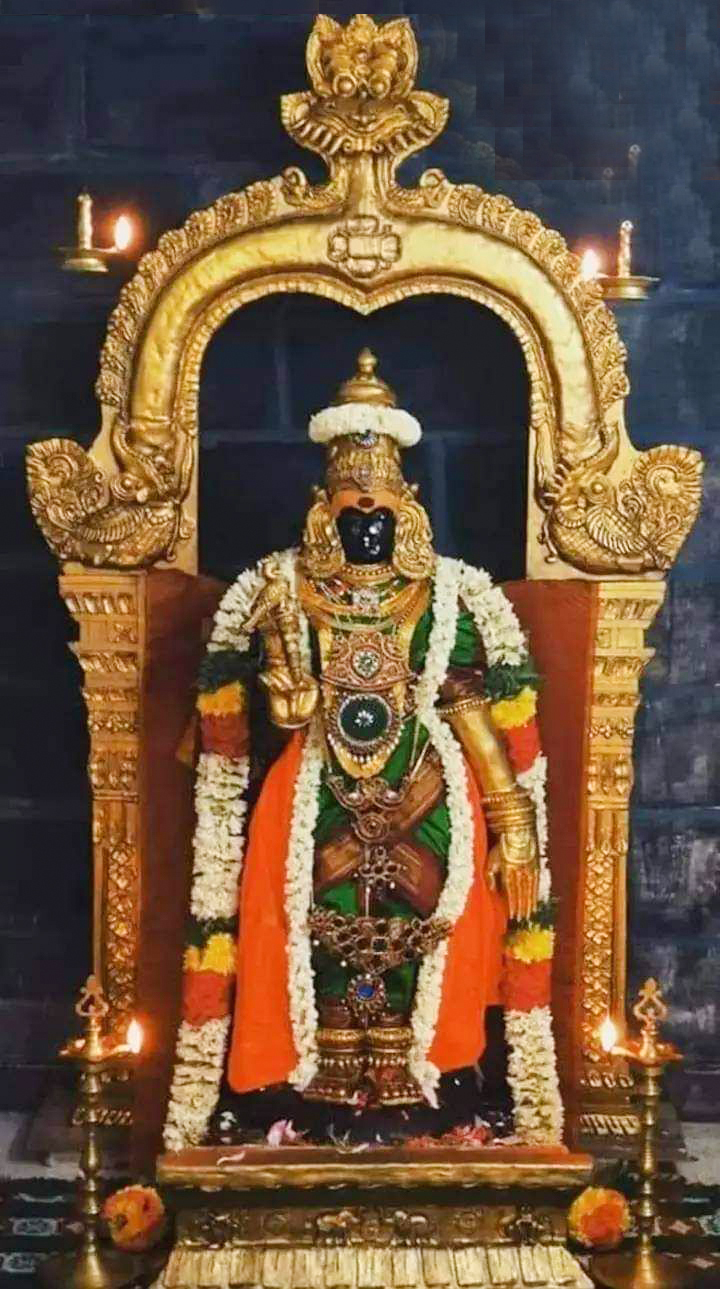


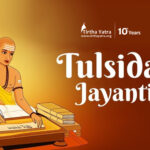
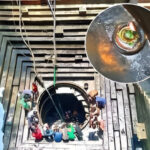
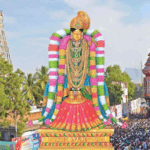


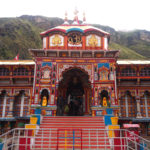
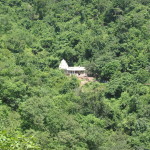
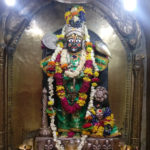
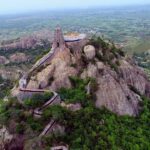
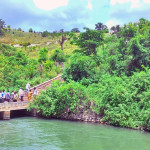
Leave a Reply